San Francisco Chronicle: A huge Bay Area art installation near the Chevron refinery vanished. The artists say it was stolen
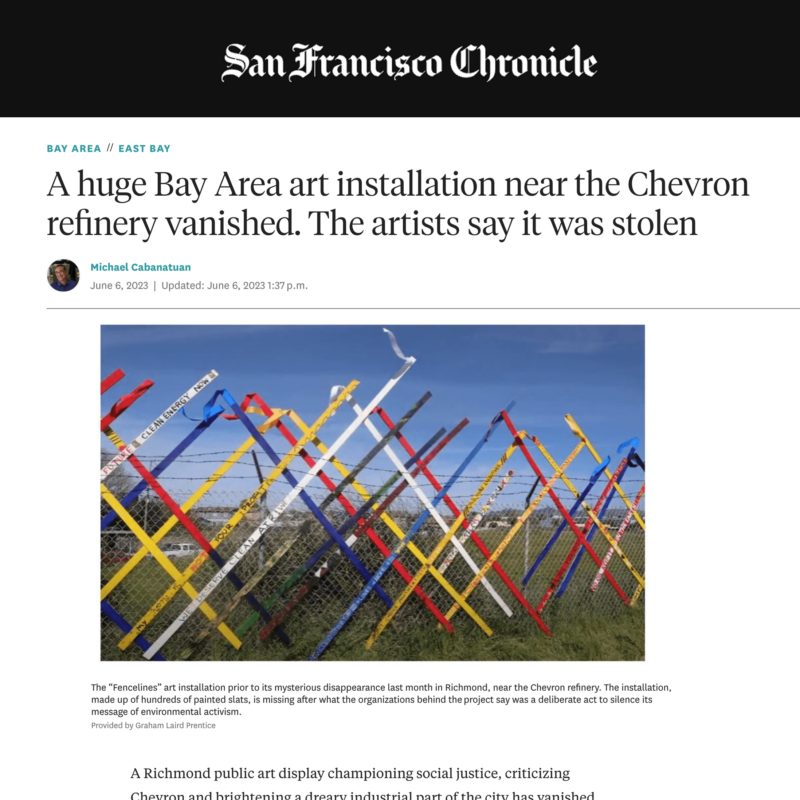
Weblink: https://www.sfchronicle.com/eastbay/article/richmond-chevron-art-installation-missing-18136796.php San Francisco Chronicle A huge Bay Area art installation near the Chevron refinery vanished. The artists say it was stolen Michael Cabanatuan | June 6, 2023 A Richmond public art display championing social justice, criticizing Chevron and brightening a dreary industrial part of the city has vanished weeks before it was scheduled to […]
East Bay Express: From the Ashes
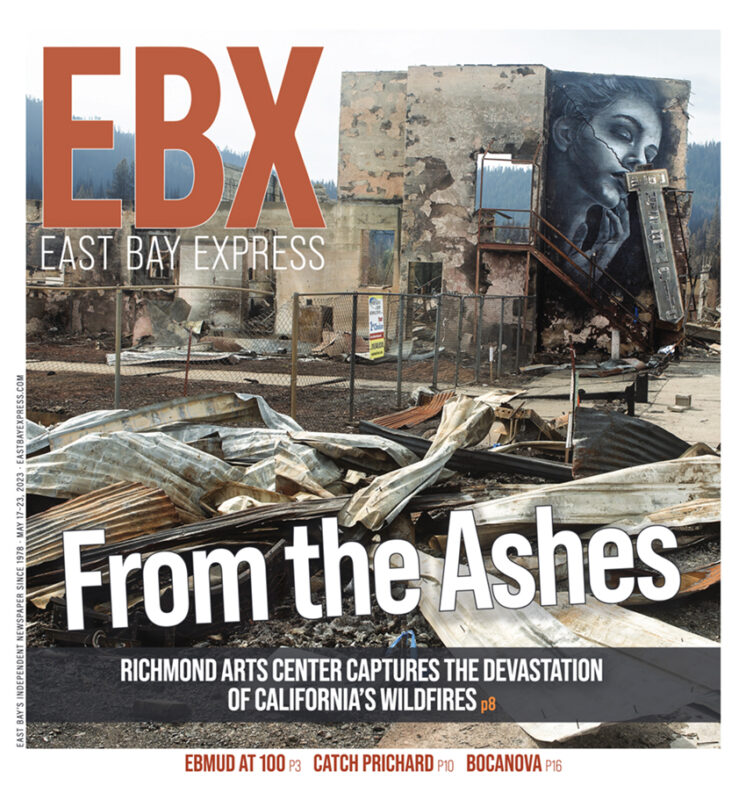
East Bay Express From the Ashes: Richmond Art enter Captures the Devastation of California’s Wildfires Article weblink: https://eastbayexpress.com/through-the-fire/ Digital copy of the East Bay Express: https://edition.pagesuite-professional.co.uk/html5/reader/production/default.aspx?pubname=&pubid=8808aae8-e6fe-4270-adb0-c95bab71909c Through the Fire By Lou Fancher | May 17, 2023 Ruth Morgan’s stark and provocative works at Richmond Art Center highlight climate change’s role in CA wildfires If artist […]
KneeDeep Times: Humanity on the Fence
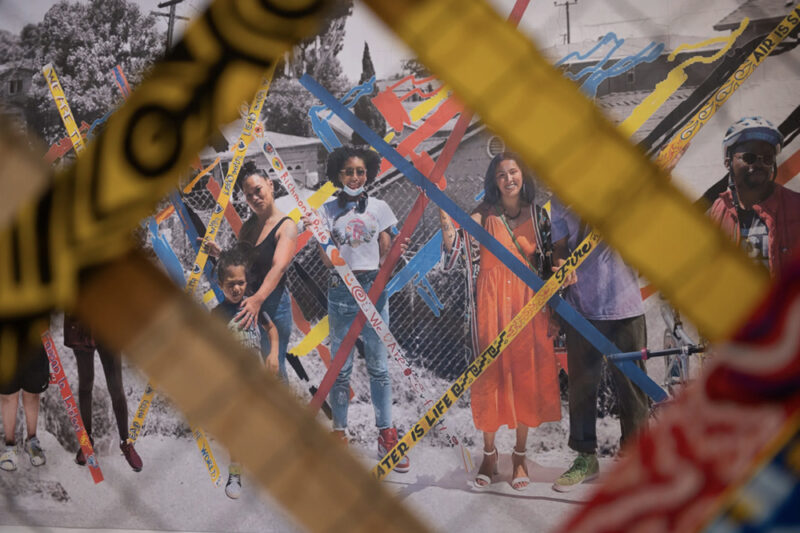
KneeDeep Times Humanity on the Fence by Jasmine Hardy | May 16, 2023 A new public art installation, called Fencelines, redefines the only barrier separating Richmond’s residential neighborhoods from the Chevron oil refinery: a wire fence. “It is a participatory project meant to engage folks and get a message to Chevron, but also gather visions that offer a future […]
The Richmond Standard: Guillermo the Golden Trout undergoes repairs for 25th anniversary
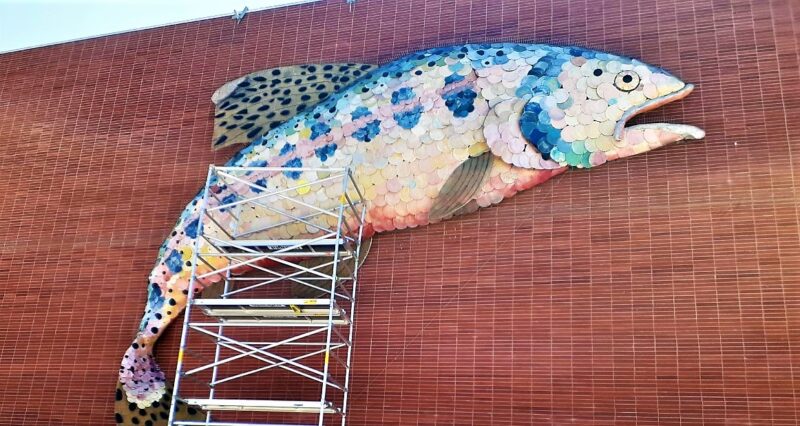
The Richmond Standard: Guillermo the Golden Trout undergoes repairs for 25th anniversary Article link: https://richmondstandard.com/richmond/2023/05/15/guillermo-the-golden-trout-undergoes-repairs-for-25th-anniversary/ By Mike Kinney On Monday, repairs on Guillermo the Golden Trout, which hangs above the Richmond Art Center on Barrett Avenue, was completed. A small team replaced two metal scales on the 50-foot-long fish. The repair is in honor of the […]
East Bay Express: Light in the Dark
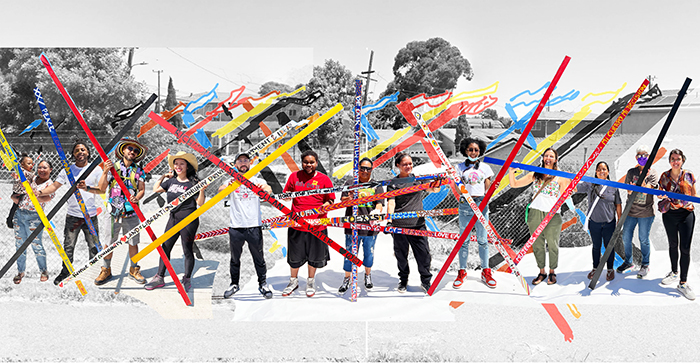
Link: https://eastbayexpress.com/light-in-the-dark/ East Bay Express: Light in the Dark By Janis Hashe | Mar 29, 2023 ‘FENCELINES’ fights back in Richmond Sometimes art speaks louder than petitions and public meetings. The creators and partners in “FENCELINES: A Collective Monument to Resilience” believe their project can. The Richmond community-based art project is designed to amplify the […]
Bohemian: Artist Amanda Ayala Invites Visitors into an Ancestral Embrace
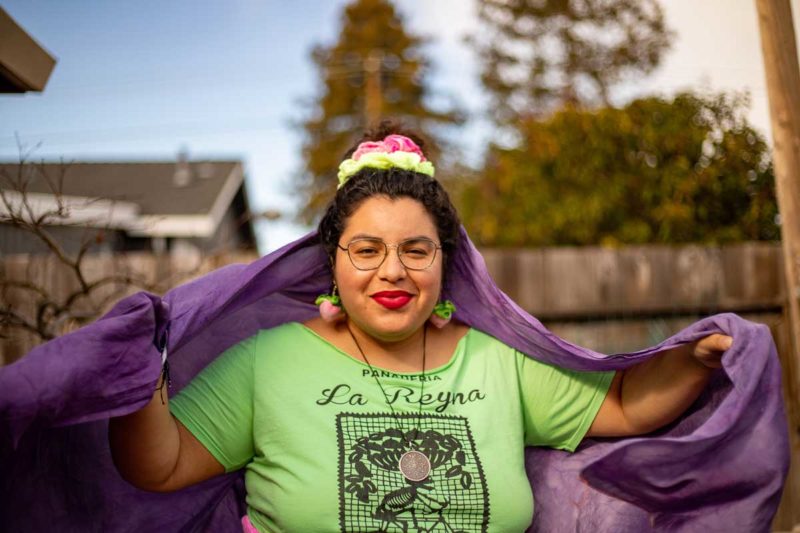
Artist Amanda Ayala Invites Visitors into an Ancestral Embrace By Chelsea Kurnick | Feb 21, 2023 Weblink: bohemian.com/amanda-ayala Three woven baskets hold round pillows, each painted with a bright sun-like geometric design. On the wall behind them, scrawled in curly cursive, is the message, “Hug a pillow/ Hug your ancestors/Notice, feel, breathe.” When she was […]
Press Recap for Art of the African Diaspora: SF Chronicle, The San Francisco Standard, Diablo Magazine, The Daily Californian, SF/Arts
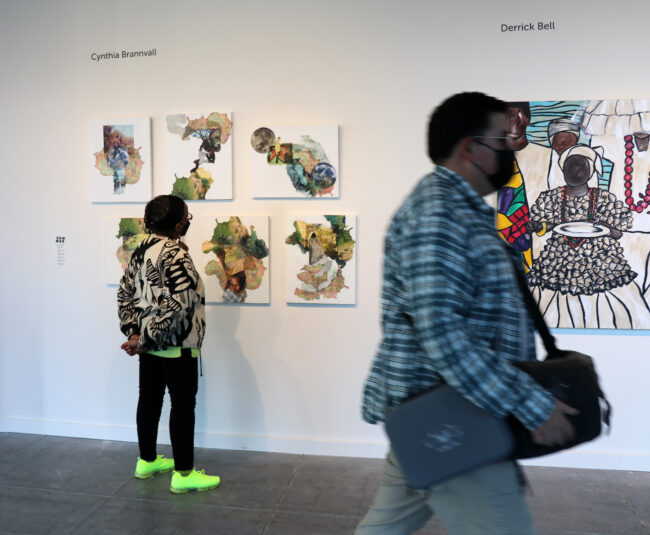
The San Francisco Standard: Celebrate Black History Month at Museums, Festivals and More Across the Bay Article Link: sfstandard.com/arts-culture/celebrate-black-history-month-at-museums-festivals-and-more-across-the-bay Christina Campodonico | February 1, 2023 Excerpt: Originating from the 1989 African American artists salon known as “Colors of Black,” this exhibition highlights the work of over 120 artists of African descent and is accompanied by […]
ArtDaily: Richmond Art Center presents ‘The Remembrance Project’ as part of their winter exhibition schedule
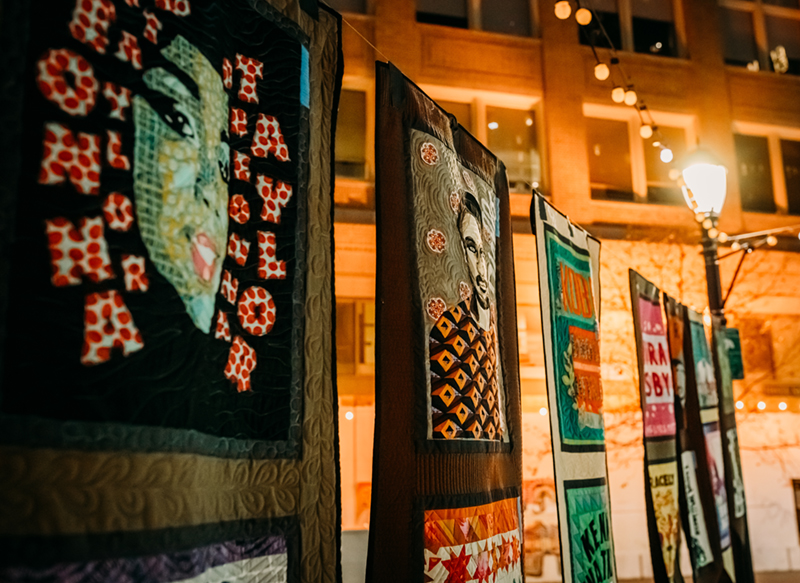
Richmond Art Center presents ‘The Remembrance Project’ as part of their winter exhibition schedule Published January 17, 2023 Link: https://artdaily.com/news/153618/Richmond-Art-Center-presents–The-Remembrance-Project–as-part-of-their-winter-exhibition-schedule RICHMOND, CALIF.- The Remembrance Project will open January 18th at the Richmond Art Center as part of their winter exhibitions project, which will include an opening reception on Saturday, January 21st from 2pm-4pm, as well as a project […]
Post News Group: Richmond Art Center Announces Trio of Winter Exhibitions
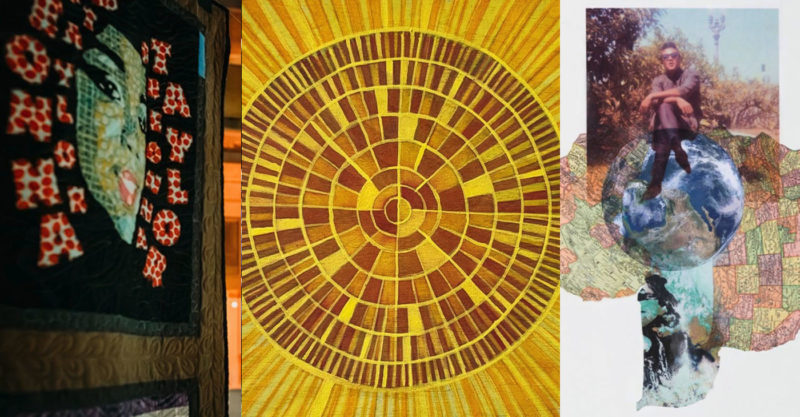
Post News Group: Richmond Art Center Announces Trio of Winter Exhibitions Community members can check out Art of the African Diaspora Jan. 18 through March 18 in the RAC’s Main Gallery, with the opening reception being held Saturday, Jan. 21 from 2 – 4 p.m. The exhibition will spotlight the work of more than 120 artists of […]
Hyperallergic: Statue of Native Activist Mysteriously Lost (and Found) in Oakland

Link: https://hyperallergic.com/791346/native-activist-leonard-peltier-statue-mysteriously-lost-found-in-oakland/ Artist Rigo 23’s sculpture of Leonard Peltier was eventually found with its arm missing and racist graffiti scrawled on a U-Haul truck in which it was being transported. by Matt Stromberg LOS ANGELES, Calif. — Artist Rigo 23’s statue of incarcerated Native American activist Leonard Peltier has traveled across the county, stood watch alongside […]
